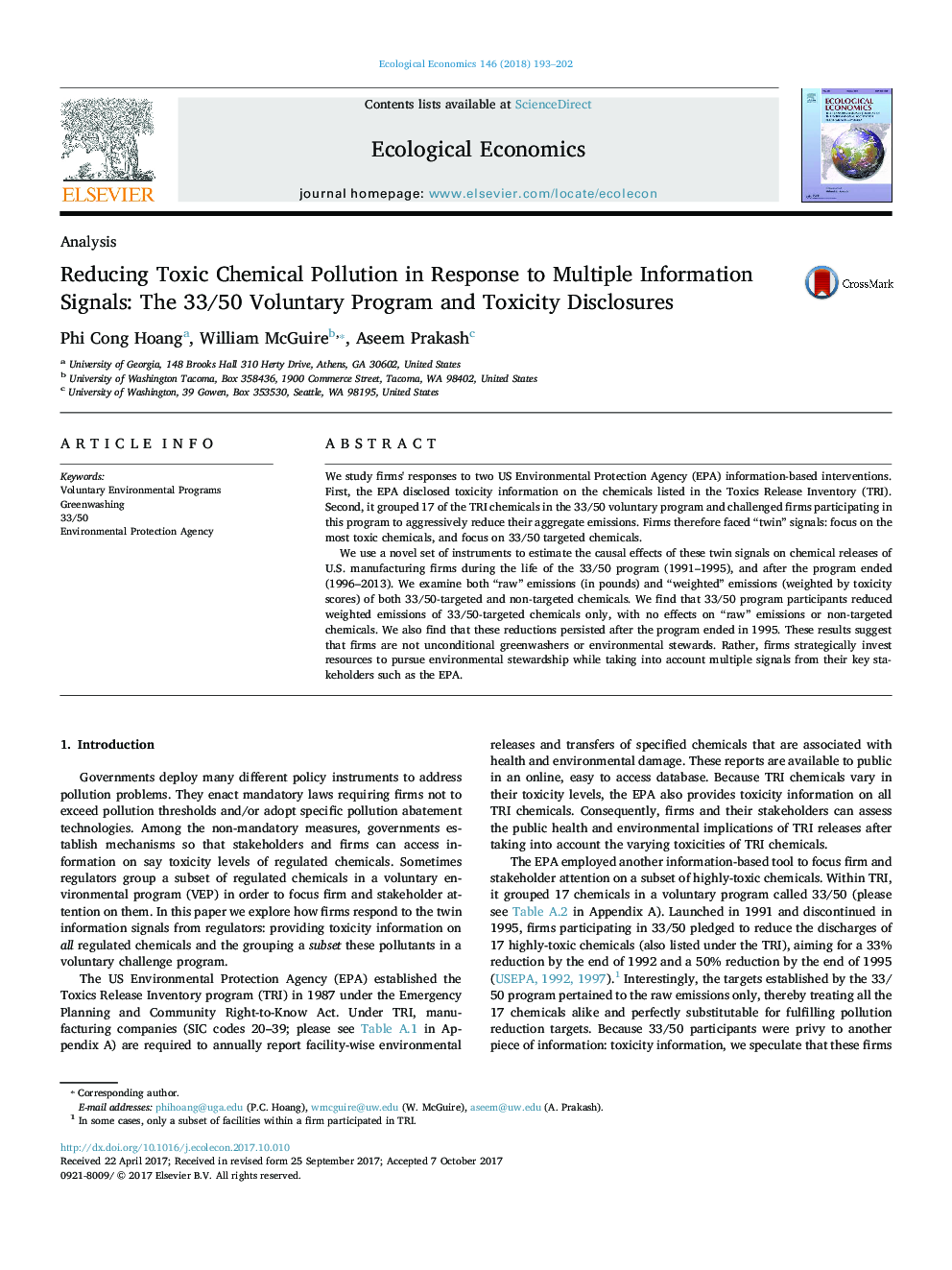| Article ID | Journal | Published Year | Pages | File Type |
|---|---|---|---|---|
| 7344529 | Ecological Economics | 2018 | 10 Pages |
Abstract
We use a novel set of instruments to estimate the causal effects of these twin signals on chemical releases of U.S. manufacturing firms during the life of the 33/50 program (1991-1995), and after the program ended (1996-2013). We examine both “raw” emissions (in pounds) and “weighted” emissions (weighted by toxicity scores) of both 33/50-targeted and non-targeted chemicals. We find that 33/50 program participants reduced weighted emissions of 33/50-targeted chemicals only, with no effects on “raw” emissions or non-targeted chemicals. We also find that these reductions persisted after the program ended in 1995. These results suggest that firms are not unconditional greenwashers or environmental stewards. Rather, firms strategically invest resources to pursue environmental stewardship while taking into account multiple signals from their key stakeholders such as the EPA.
Related Topics
Life Sciences
Agricultural and Biological Sciences
Ecology, Evolution, Behavior and Systematics
Authors
Phi Cong Hoang, William McGuire, Aseem Prakash,
